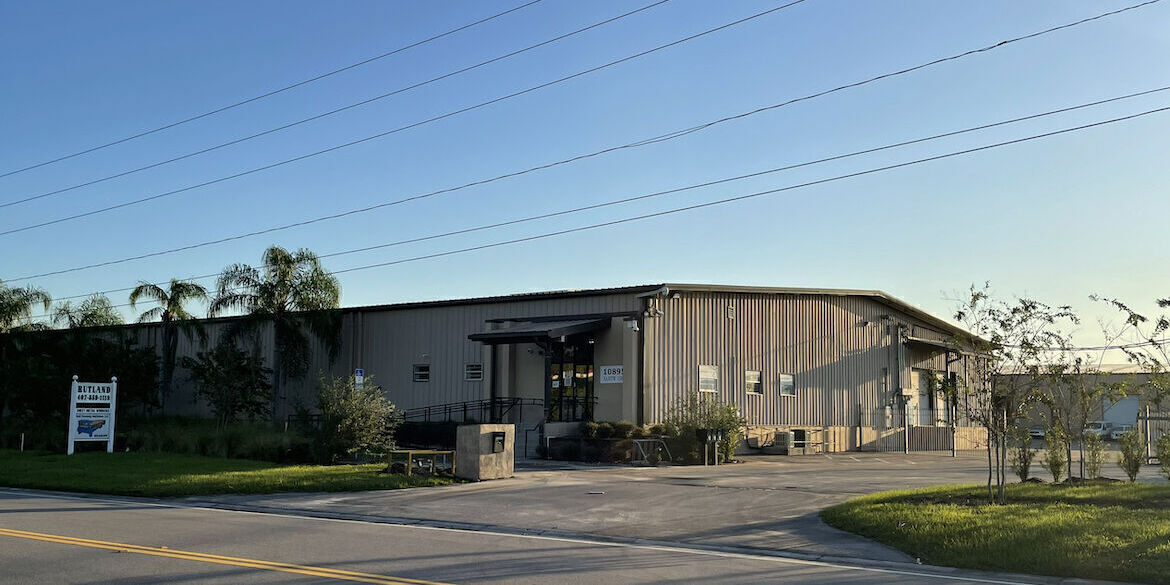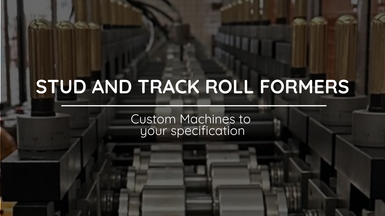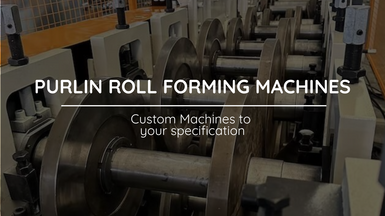
Standing Seam Machine
Standing seam machines come in various sizes and configurations, ranging from portable, hand-operated machines
Posted on Saturday, November 25, 2023
A standing seam machine is a piece of equipment used in the construction and roofing industry to fabricate standing seam metal roofing panels. Standing seam roofing is a popular choice for both residential and commercial buildings due to its durability, weather resistance, and aesthetic appeal. The term "standing seam" refers to the raised vertical lines or seams that run along the length of the metal panels.
Here's how a standing seam machine typically works:
- Material Preparation: The process begins with metal coils or sheets, usually made of materials like steel, aluminum, or copper, being loaded onto the machine. These metal sheets are typically pre-painted or coated for added protection and aesthetics.
- Roll Forming: The heart of the standing seam machine is the roll forming system. This system consists of a series of rollers and dies that gradually shape the flat metal sheets into standing seam profiles. As the metal sheet passes through the rollers, it is bent and formed into the desired profile, creating the raised seams and the flat areas in between.
- Panel Cutting: Depending on the specific design requirements, the machine may also have the capability to cut the formed panels to the desired length. Some machines have automated cutting systems, while others require manual cutting.
- Seam Sealing: After the panels are formed and cut, they are often installed on the roof or wall of a building. Specialized seam-sealing techniques or accessories may be used to ensure that the seams are watertight and weather-resistant. This step is crucial to prevent leaks and protect the building from the elements.
Standing seam machines come in various sizes and configurations, ranging from portable, hand-operated machines suitable for small-scale projects to large, automated machines used in industrial settings. The choice of machine depends on the scale of the roofing project and the desired panel specifications.
Standing seam roofing offers several advantages, including longevity, low maintenance, energy efficiency, and a sleek, modern appearance. The use of a standing seam machine helps ensure the precise fabrication of panels, resulting in a high-quality finished product that meets the design and performance requirements of the project.
Pros of Buying a New Standing Seam Machine
When considering whether to purchase a new or used standing seam machine for fabricating metal roofing panels, it's essential to weigh the pros and cons of each option. Here are the advantages and disadvantages of buying either a new or used standing seam machine:
Pros of Buying a New Standing Seam Machine:
- Warranty: New machines typically come with a manufacturer's warranty, providing you with peace of mind that you're covered in case of defects or malfunctions.
- Reliability: New machines are less likely to have wear and tear, ensuring reliability and consistent performance from the start.
- Latest Technology: New machines often incorporate the latest technological advancements, such as improved automation, precision, and safety features.
- Longevity: A new machine typically has a longer expected lifespan than a used one, which can provide value over many years.
- Customization: You can choose a new machine with the specific features and capabilities that best meet your needs and project requirements.
- Training and Support: Manufacturers of new machines often provide training and technical support to help you get started and troubleshoot any issues.
Cons of Buying a New Standing Seam Machine:
- Higher Cost: New machines are more expensive than their used counterparts, which can be a significant upfront investment.
- Depreciation: Like any new equipment, the value of a new standing seam machine depreciates over time, which can affect your overall return on investment.
- Initial Learning Curve: You may need some time to learn how to operate a new machine effectively, and training costs could be involved.
Pros of Buying a Used Standing Seam Machine:
- Cost Savings: Used machines are generally more affordable upfront, making them a budget-friendly option for small businesses or contractors with limited resources.
- Immediate Availability: You can often find used machines on the market with shorter lead times compared to waiting for the delivery of a new machine.
- Proven Performance: If well-maintained, used machines may have a track record of reliable performance, making them a reliable choice.
Cons of Buying a Used Standing Seam Machine:
- Uncertain History: When buying used, you may not have full visibility into the machine's maintenance history or any potential issues it may have had.
- Limited Warranty: Used machines may not come with a warranty, leaving you responsible for repair and maintenance costs.
- Possible Wear and Tear: Depending on the age and condition of the used machine, it may require more frequent maintenance or repairs, which can add to the overall cost.
- Outdated Technology: Older used machines may lack the latest features and technological advancements, potentially affecting efficiency and productivity.
- Availability and Selection: Finding the right used machine that meets your specific requirements may require more effort, and the available selection may be limited.
Ultimately, the decision to buy a new or used standing seam machine should be based on your budget, the specific needs of your business, and your long-term goals. If you have the financial resources and prioritize the latest technology and warranty support, a new machine may be the better choice. However, if budget constraints are a concern, a well-maintained used machine can be a cost-effective alternative, provided you conduct thorough research and inspections before making a purchase.
Standing seam profile
A standing seam profile refers to the distinctive raised seams or ribs that are formed on metal roofing or cladding panels. These profiles are a key feature of standing seam roofing systems, and they contribute to both the aesthetics and functionality of the roofing material. Standing seam profiles are characterized by their vertical or near-vertical orientation, and they play a crucial role in the overall performance and appearance of the roof. Here are some key aspects of standing seam profiles:
- Seam Design: The standing seam itself is the raised connection between adjacent metal panels. These seams are typically created by folding or crimping the edges of two adjoining metal sheets together. The seam design can vary, with the most common profiles being single-lock and double-lock seams. Single-lock seams have one fold, while double-lock seams have two folds, providing additional weather resistance.
- Rib Height: The height of the standing seam ribs can vary depending on the design and manufacturer. It typically ranges from 1 to 3 inches or more. The height of the ribs affects the overall appearance of the roof and can also impact its structural strength.
- Rib Spacing: The spacing between standing seams also varies, with common spacings ranging from 12 to 24 inches. Wider rib spacing can result in a more visually pronounced pattern on the roof.
- Panel Width: The width of the metal panels can vary, but it is often standardized to fit specific installation methods and equipment. Standard panel widths are typically in the range of 12 to 24 inches.
- Material: Standing seam profiles can be made from various materials, including steel, aluminum, copper, zinc, and others. The choice of material can affect the durability, appearance, and cost of the roofing system.
- Attachment Methods: Standing seam panels are attached to the roof deck or substrate using various methods, including concealed fasteners or clips. These attachment methods contribute to the clean, uninterrupted appearance of the roof's surface.
Standing seam roofing systems are known for their durability, weather resistance, and modern architectural appeal. The standing seam profiles not only create a visually appealing pattern but also provide functional benefits, such as shedding water and preventing leaks. Additionally, the concealed fasteners and seams make it difficult for moisture to infiltrate, enhancing the overall weatherproofing of the roof.
Overall, standing seam profiles are a defining characteristic of standing seam metal roofing, and they are a popular choice for a wide range of architectural and construction applications.
What is the most popular standing seam?
There isn't a single "most popular" standing seam profile or roofing system, as the popularity of specific profiles can vary by region, architectural style, and individual project requirements. Different profiles have their own unique aesthetic appeal and performance characteristics, and the choice often depends on the preferences of architects, contractors, and building owners.
That said, some standing seam profiles have gained widespread recognition and popularity in the roofing industry. These profiles are commonly used in various applications due to their versatility and performance. Some popular standing seam profiles and systems include:
- Double-Lock Standing Seam: This profile features double folds at the seams, providing extra weather resistance. It's known for its durability and is commonly used in commercial and residential projects.
- Snap-Lock Standing Seam: Snap-lock profiles have a single fold at the seams, and the panels snap together, eliminating the need for mechanical seaming. This makes installation faster and more accessible. It's often used in residential roofing.
- Mechanically Seamed Standing Seam: These profiles use mechanical seaming machines to crimp the seams tightly together, ensuring exceptional weather resistance. They are frequently employed in commercial and industrial applications.
- Batten Seam: Batten seam roofing systems incorporate vertical battens (wood or metal strips) over the seams, creating a distinctive architectural look. They are often seen on historical and residential buildings.
- Trapezoidal Standing Seam: This profile features trapezoid-shaped panels with standing seams. It's used in a variety of applications, including commercial and industrial buildings.
- Flatlock Seam: Flatlock seams are typically used in wall cladding rather than roofing. They create a flat, smooth surface with minimal visible seams and are often used for modern architectural designs.
It's important to note that the choice of the most suitable standing seam profile depends on factors such as the climate, building design, budget, and aesthetic preferences. Architects and roofing professionals often work closely with clients to determine the best profile for a specific project.
To find the most popular standing seam profile in your region or for the most current information, it's advisable to consult with local roofing contractors, suppliers, and architects who have up-to-date knowledge of the prevailing trends and preferences in your area. Roofing trends and preferences can also change over time, so what is popular may evolve beyond my last knowledge update.
What is the most affordable standing seam?
The affordability of a standing seam roofing system depends on various factors, including the material used, the complexity of the installation, the size of the project, and the location. Generally, some factors that can influence the cost of a standing seam roofing system and make it more affordable include:
- Material Choice: Different materials, such as steel, aluminum, and coated or painted metals, have varying costs. Steel is often more affordable than materials like copper or zinc. Choosing a more cost-effective material can make the overall system more affordable.
- Panel Profile: Some standing seam profiles are simpler to manufacture and install, which can result in lower labor costs. Profiles with fewer complex folds or seams may be more cost-effective.
- Panel Width: Wider panels typically require fewer panels and less labor for installation compared to narrower panels. However, the choice of panel width should be based on the specific project's design and requirements.
- Roof Complexity: The complexity of the roof design, including the number of roof penetrations (such as vents or skylights) and the presence of architectural details, can impact the installation cost. A straightforward, rectangular roof is generally more affordable to install than a roof with numerous angles and features.
- Contractor Selection: The choice of roofing contractor can significantly affect the cost. Obtaining multiple quotes from reputable contractors and comparing their pricing is essential to finding an affordable option.
- Geographic Location: Labor and material costs can vary by region, so the geographic location of the project can influence the overall cost of a standing seam roofing system.
- Access to Materials: The availability of roofing materials and suppliers in your area can impact costs. Local availability may reduce transportation costs.
- Project Size: Larger roofing projects may benefit from economies of scale, potentially reducing the cost per square foot.
- Installation Method: Some installation methods, such as mechanically seamed panels, may require specialized equipment and skilled labor, which can increase costs compared to simpler installation methods.
Is standing seam more expensive than corrugated?
To find the most affordable standing seam roofing system for your specific project, it's essential to gather quotes and consult with roofing professionals in your area. They can assess your project's requirements, discuss material and profile options, and provide cost estimates tailored to your needs. Keep in mind that while cost is an important consideration, it's also essential to prioritize the quality and durability of the roofing system to ensure long-term performance and value.
Standing seam and corrugated metal roofing systems can have different costs associated with them, and the relative expense of one compared to the other depends on various factors. Here are some key considerations when comparing the cost of standing seam and corrugated metal roofing:
- Material Cost: Standing seam roofing materials are often more expensive than corrugated metal materials. Standing seam panels are typically made from thicker gauge metal and are designed for a sleek, modern appearance, which can increase material costs. Corrugated panels, on the other hand, are thinner and simpler in design, making them more budget-friendly in terms of materials.
- Labor Costs: Labor costs for installing standing seam roofing can be higher than for corrugated metal due to the complexity of the installation. Standing seam panels require precise measurements, custom fabrication, and often involve concealed fasteners and seam folding or mechanical seaming, which can require specialized skills and tools. Corrugated metal panels are typically easier and faster to install.
- Design and Aesthetics: Standing seam roofing is known for its premium appearance and architectural appeal. If a specific architectural design or aesthetic is desired, the additional cost of standing seam might be justified. Corrugated metal panels have a more traditional, industrial look and may be chosen for cost savings.
- Longevity and Maintenance: Standing seam roofing systems often come with longer warranties and are known for their durability and low maintenance requirements. While the upfront cost may be higher, the long-term value and reduced maintenance costs can make standing seam more cost-effective over the life of the roof.
- Project Complexity: The complexity of the roofing project can impact costs. A straightforward, rectangular roof with no additional features may have lower installation costs regardless of the roofing type. However, if the project involves architectural details, skylights, or other complexities, the cost difference between standing seam and corrugated metal roofing may vary.
- Geographic Location: Labor and material costs can vary significantly by region, affecting the overall cost of both standing seam and corrugated metal roofing.
In summary, while standing seam roofing materials are generally more expensive than corrugated metal materials, the total cost of a roofing project depends on multiple factors, including labor, design, and long-term considerations. When deciding between the two, it's essential to weigh the upfront costs against the durability, aesthetics, and maintenance requirements of the roofing system, as well as your specific project requirements and budget. Consulting with roofing professionals and obtaining quotes based on your unique circumstances can help you make an informed decision.
Roll Forming Machines LLC's New Factory
Posted on Sunday, March 23, 2025
We have relocated factories, which will be available for tours very soon.

Uncoiler, Decoiler and Coil Car Roll Forming Machine Accesories from Roll Forming Machines LLC
Posted on Sunday, November 24, 2024
Contact us today with your specifications for a custom Uncoiler, Decoiler or Coil Car at [email protected] or call us at (+1) (407) 859 1119

Stud and Track Roll Forming Machines from Roll Forming Machines LLC
Posted on Saturday, November 23, 2024
Contact us today with your specifications for a custom Stud and Track Machine at [email protected] or call us at (+1) (407) 859 1119

Cee and Zee Purlin Roll Forming Machines from Roll Forming Machines LLC
Posted on Saturday, November 23, 2024
Contact us today with your specifications for a custom Cee and Zee Purlin Machine at [email protected] or call us at (+1) (407) 859 1119